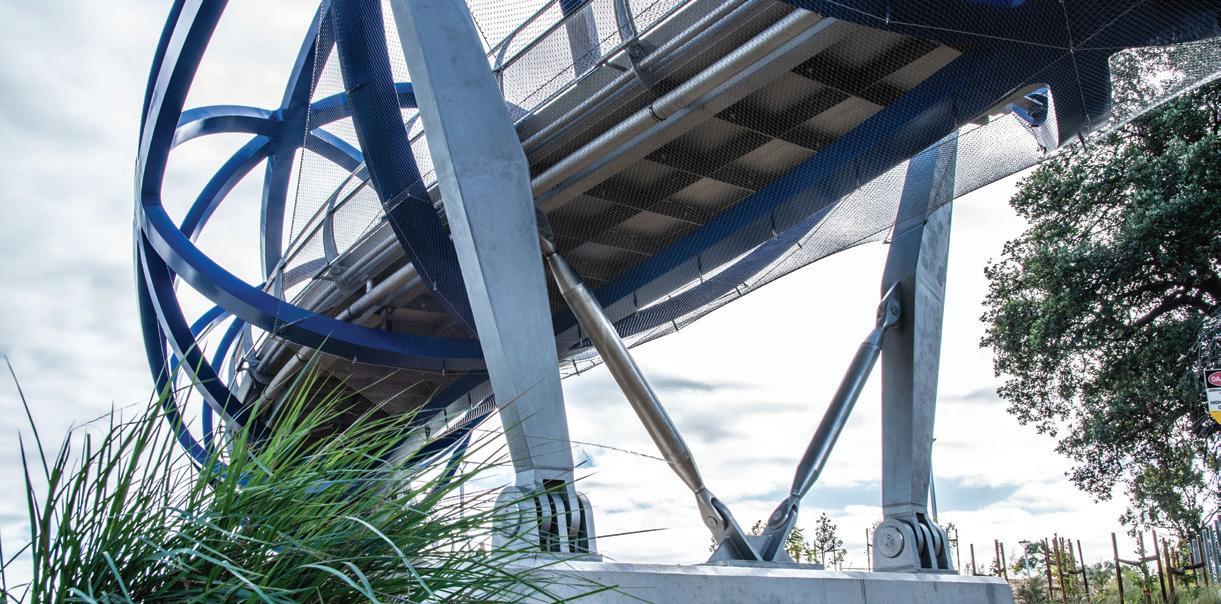
3 minute read
Carbon capture, naturally
Research at BHP’s Nickel West Mount Keith nickel mine shows that one year’s worth of tailings currently captures about 40,000 tonnes of CO2, with the potential to capture 4 million tonnes. Most companies have publicly announced that they plan to be carbon neutral either by or before 2050. This will be a significant challenge for many of them. One way to help achieve carbon neutrality is by capturing carbon dioxide that has either been generated in a process such as fuel combustion or that occurs in the atmosphere. The captured CO² can be used in another process or be permanently stored so that it will not be released. There are many different proposed and operating processes to capture carbon dioxide and then sequester it, and most of them are expensive to build and operate. But what if there was a plentiful and naturally occurring substance that reacted with CO² in the air to form matter that could be easily and safely stored for many thousands of years? Some mining companies have that option.
Ultramafic rock absorbs CO²
Advertisement
In mining, the target minerals are mixed with other minerals, called gangue. A mine will grind rock to separate out the target minerals, with the rest being disposed of as tailings.
But if the tailings are composed of ultramafic rock – the general term for different minerals that contain a relatively high magnesium content along with low silica content – they will slowly absorb CO² from the atmosphere, converting it to a stable and solid carbonate compound. In other CO² storage technologies, gaseous carbon dioxide is pumped into the earth and remains as a gas, whereas here the CO² transforms into a solid chemical which will remain in that form for thousands of years. For example, serpentine, a magnesium silicate hydroxide, is one such ultramafic rock commonly found in tailings. It will naturally react with carbon dioxide in the air to form magnesium carbonate.
Passive carbon mineralisation
Research at BHP’s Nickel West Mount Keith nickel mine in Western Australia shows that one year’s worth of tailings currently captures, without any special processing, about 40,000 tonnes of CO². This is called passive carbon mineralisation. However, those tailings have the capacity to capture 4 million tonnes of CO², but the natural reaction rate is very slow. Similarly, a report for the Dumont nickel-cobalt mine in northern Quebec, Canada has suggested that 21,000 tonnes of CO² per year could be captured passively over the projected 33 year life of the mine. Laboratory work is being done to establish how the reaction can be accelerated. Such technology could allow many mines to not only be carbon neutral, but to be carbon negative. This is of special interest to mines that produce metals for electric vehicle (EV) batteries – EV purchasers want to know that the battery components have been
Operationalising the process
One company working towards being carbon negative is Canada Nickel, based on their proposed Crawford Project, a nickel-cobalt sulphide mine located near Timmins in Ontario, Canada. They have developed a novel process they call In Process Tailings Carbonation which would fix the CO² in the processing circuit. It would use a concentrated source of CO², for example from natural gas power generation. Mark Selby, Chair and CEO of Canada Nickel, commented “These lab scale tests advance our understanding of how to operationalise this process to turn a nickel mine into a net generator of carbon credits rather than a generator of carbon emissions.”
Similarly, other nickel projects are working on increasing the reaction speed. FPX Nickel has performed tests on tailings from their proposed Baptiste Project in central British Columbia, Canada. “FPX is very proud to be playing a leading role in applying fundamental science to evaluate the potential for large-scale permanent carbon capture and storage in the mining industry,” said Martin Turenne, FPX’s President and CEO. And, Giga Metals is funding research to determine how to use the tailings from their proposed Turnagain mine in British Columbia, for carbon capture. The Earth’s mantle is composed of ultramafic rocks, and the potential CO² capture is huge. While nickel mines have been featured in this story, the natural carbon capture nature of the ultramafic rocks can be utilised by many types of mining enterprises around the world. The Earth’s mantle is composed of ultramafic rocks and the potential for CO² capture is huge.







